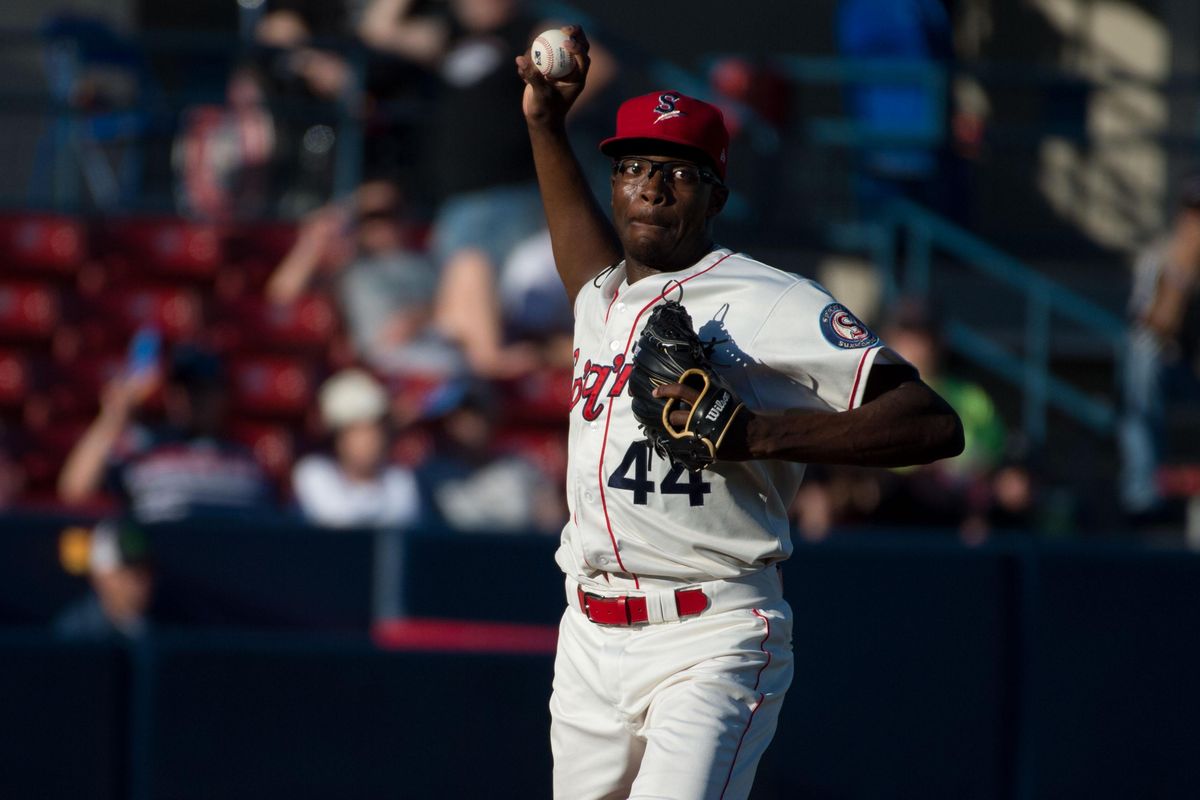Young Spokane Indians players learn to work through struggles in low minor leagues

In recent years, the Spokane Indians have struggled to get over .500, going on losing streaks that could make any fan of the Texas Rangers’ short-A affiliate cringe.
On Saturday, the Indians added a loss to their now five-game losing streak. It’s another blow to the team’s confidence that was heightened at the start of the second half, when the Indians led the league with a 7-1 record following a six-game winning streak.
That streak helped pull the Indians to the top of the standings with a .500 overall record for the first time since the start of the season, a great improvement from the first half when the team fell to last place. But their efforts weren’t enough to get them over the .500 mark.
While the team’s struggle to reach a winning record continues, the Indians have remained focused on the positives – particularly first-year manager Matt Hagen, who said his players’ frequent subpar performances on the field mean only one thing: they’re in the right place.
“That’s the reason we’re here in A-ball, so that guys can try and develop more consistency,” Hagen said.
And if they fail, so be it. In fact, failure at the Class A level is arguably encouraged.
“If you can get kids to fail at the low levels of the minor leagues, they’re going to be better off for it as the rest of their career progresses,” Hagen said. “You don’t want guys learning how to fail in Triple-A for the first time in their career.”
While it can be tough to watch from the stands, failure more than often helps players learn how to power through the slump and bounce back.
“If (a player) can learn to cope with that in Spokane, by the time he gets to double-A, he already knows how to cope with it. And if he makes it to the big leagues, he’s already been through that.”
No doubt about it, the Indians have endured plenty of failure already this season. While much of their losses stem from sloppy defense and cold offense, the majority of that failure has been driven by Spokane’s staff of young starting pitchers, a few of which are barely out of high school.
The majority of those starters made their minor-league debuts this season after playing in the Arizona League, a rookie-level league in the greater Phoenix area.
That’s where the Rangers’ top two picks from the 2016 amateur draft landed shortly after high school. Cole Ragans was uprooted from his hometown in Florida and moved to Surprise, Arizona, where as an 18-year-old pitcher he worked in the rookie league for the entire 2016 season.
He was joined by several other recent draftees, including current Spokane Indians pitcher Alex Speas, who was also selected out of high school by the Rangers. He was drafted in the second round last year.
Both arms were assigned to the Indians at the start of the short-A season in June. For Ragans and Speas – and a few other starters – this season marked their first time playing in front of a few thousand fans.
“It’s a big wake-up call for them,” Indians pitching coach Joey Seaver said. “Some guys handle it a little better than others. You just never know what you’re going to get until they step up there in front of the crowd.”
Some of the newbies have certainly shined in the spotlight. Ragans has consistently been a threat on the hill, leading the league with 66 strikeouts.
The lefty admitted earlier in the season that his control still needs quite a bit of work. Despite his impressive amount of strikeouts, Ragans has issued a substantial number of walks, with a team-leading 27.
“I’ve got to cut down on walks, I’ve really got to cut down on walks,” Ragans said earlier this season. “Every day, I’m trying to get better at something,” Ragans said.
Speas, on the other hand, hasn’t been much of a stunner on the mound this season. The righty has six losses without a win. He worked himself to a 10.89 ERA in seven starts through Spokane’s 10-9 loss to Everett on July 25.
In that game, Speas allowed earned six runs in 2 1/3 innings. Since then, Seaver has moved the righty to a relief spot, allowing Speas to get on the hill more often to iron out his pitches without the added stress of the starting role.
“It’s worked so far,” Seaver said. “It seems like the weight of the world is off his shoulders. It’s been good for him.”
While working in relief in his last four appearances, Speas has allowed just one hit in each game and one unearned run over seven innings. It’s a vast improvement, and a testament to what the farm system is really about.
“It’s about the development process. Can these guys progress and move on up from here? That’s what it’s about,” Seaver said.